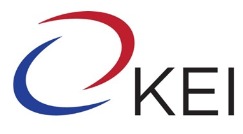1984 Posts located
Asia
1984 Posts located
April 2, 2025
January 4, 2024
December 19, 2023
November 30, 2023
The year 2006 witnessed increasing concern among both Americans and South Koreans that their alliance of more than 50 years might be in jeopardy. Differences between the two governments over…
May 25, 2011
Monetary and Exchange Rate Policy in Declining Centrally Planned Economies and in Early Transition Economies: Some Observations of North Korea
May 25, 2011
North Korean Economic Reform: An Uncertain Future for a Third-Way Exploration
May 25, 2011
May 25, 2011
In this episode we speak with Doug Goudie, Director of International Trade Policy at the National Association of Manufacturers (NAM). Mr. Goudie draws from his experiences to share his perspective…
November 2, 2010
In this episode we hear from Tami Overby, Vice President for Asia at the U.S. Chamber of Commerce and former President of the American Chamber of Commerce in Korea. Ms.…
October 14, 2010
Now in its tenth year, KEI’s Opinion Leaders Seminar (OLS) is an annual gathering of some of the world’s foremost policymakers and scholars on the U.S.-South Korean alliance. In this…
August 19, 2010
An exclusive interview with Dr. Alon Levkowitz, author of the most recent edition of the Korea Economic Institute’s Academic Paper Series. His paper, titled “The Republic of Korea and the…
August 13, 2010
- « Previous
- 1
- …
- 46
- 47
- 48
By Jongsung Kim According to a recent Bank of Korea (BOK) release, Korea’s household debt reached its historically highest level at the end of the third quarter in 2014. The report shows that at the end of September 2014, the household debt registered at 1,060.3 trillion won, a 6.7 percent year-on-year increase (993.6 trillion won)…
December 11, 2014
By Troy Stangarone One of the keys to attracting international investors to the Kaesong Industrial Complex is reducing the political risk of making an investment in the complex and providing a stable business environment. Since the reopening of Kaesong last year, only the German manufacturer, Groz-Beckert, has decided to take that risk. However, a new…
December 8, 2014
By Troy Stangarone At first glance, the prospect of a summit meeting between Kim Jong-un and Vladimir Putin makes sense. Both Russia and North Korea find themselves increasingly isolated internationally and a summit meeting presents a potential opportunity to demonstrate that they are not as isolated as some may believe. However, below the surface, a…
December 4, 2014
By Phil Eskeland On August 1, 1975, 35 nations representing the rival Eastern and Western bloc alliances[1] signed an accord that created the Conference on Security and Cooperation in Europe (CSCE) designed to reduce tensions and promote dialogue during the height of the Cold War as part of the “détente” policy of the 1970’s. The…
